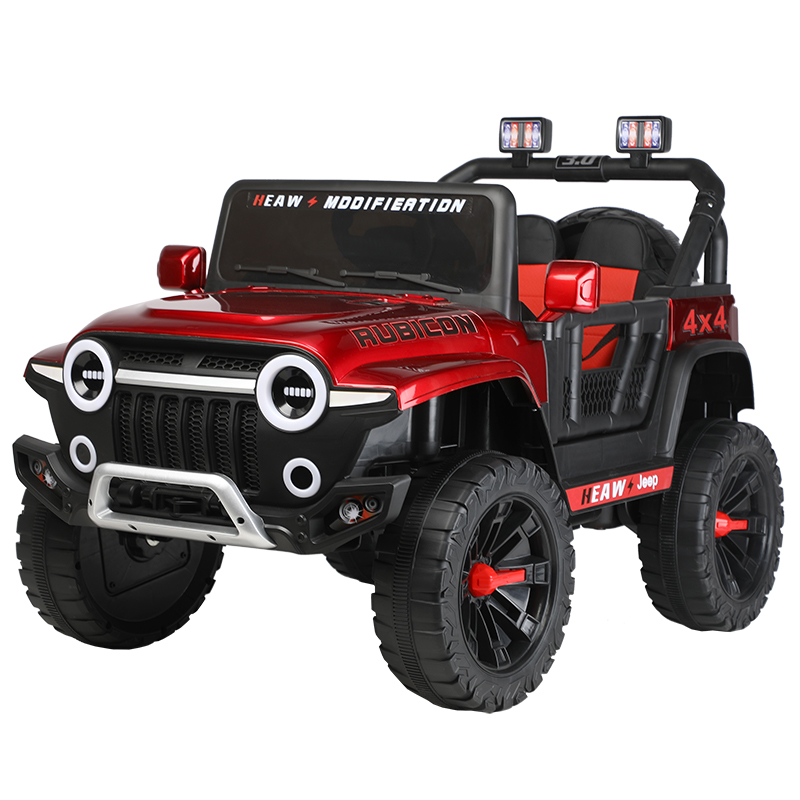12 Volt vs 24 Volt Ride-On Toys: Which Is Right for Your Child?
When shopping for a ride-on toy, voltage matters. The power source directly affects speed, weight capacity, and terrain compatibility. Two popular options dominate the market—12 volt and 24 volt.
What Is a 12 Volt Ride-On Toy?
A 12 volt ride-on toy uses a single 12V battery. These are ideal for younger kids aged 2 to 5 years. They usually reach speeds of 2.5 to 5 mph. That’s fast enough to thrill little ones, but still safe.
Best use cases:
Indoor or smooth surfaces
Flat pavements and driveways
Lightweight children
Pros:
Lightweight and easy to handle
Safer for toddlers
Budget-friendly
Cons:
Limited power
Struggles on grass or hills
Shorter run-time compared to 24V

What Is a 24 Volt Ride-On Toy?
A 24 volt ride-on toy uses two 12V batteries wired in series. These are designed for older kids aged 5 to 8 or even older. They can hit speeds up to 6 to 7 mph, depending on the model.
Best use cases:
Rougher terrain like grass or gravel
Small hills and inclines
Heavier children or multiple riders
Pros:
More powerful motor
Handles off-road surfaces well
Longer battery life
Cons:
Heavier, harder to transport
Pricier than 12V models
May be too fast for very young kids
Speed Comparison: Which Is Faster?
Speed can be a deciding factor. A 12V model typically maxes out at 5 mph. On the other hand, 24V electric ride on toy car, can go up to 7 mph. That might not sound like a big difference, but to a child, it’s thrilling.
Battery Life and Charging Time
Both options need regular charging. However, 24V ride-ons generally last longer. Expect 1–2 hours of play on a full charge for 12V. A 24V model can last 2–3 hours.
Charging time also differs. A 12V battery takes about 8–10 hours to charge. A 24V setup may take slightly longer, up to 12 hours.
Terrain and Performance
Terrain plays a huge role in your decision. A 12V car performs well on flat ground. But it may stall on grass or gravel. If your yard isn’t perfectly flat, go for 24V.
24V toys have stronger motors. They’re made for bumpy backyards, small hills, and even light trails.
Safety Considerations for Parents
Safety always comes first. A slower toy often means fewer accidents. That’s why 12V is ideal for toddlers. Parents can relax knowing the toy won’t go too fast.
Many 24V ride-ons come with seatbelts, remote controls, and speed limiters. These features help parents stay in control, even with higher speeds.
Cost Comparison: Budget vs Performance
Price varies between models, but 12V toys are usually cheaper. Expect to pay $150–$300 for a good 12V model. In contrast, 24V ride-ons range from $300–$600 or more.
While 24V models cost more, they offer better features, stronger builds, and longer use.
Which One Should You Choose?
Here’s a quick guide to help you decide:
Choose 12V if:
Your child is under 5
You’ll use it indoors or on smooth pavement
You want a lower price
Choose 24V if:
Your child is over 5
You need power for hills and grass
You want a longer-lasting ride
Final Thoughts: Get the Right Ride for the Right Age
Both 12 volt and 24 volt ride-on toys have their perks. The best choice depends on your child’s age, weight, and play environment. Consider your terrain, budget, and safety needs before buying.
Whichever you pick, your child is in for hours of fun and adventure! For more details please contact Habibi
21
0
0

Comments
All Comments (0)